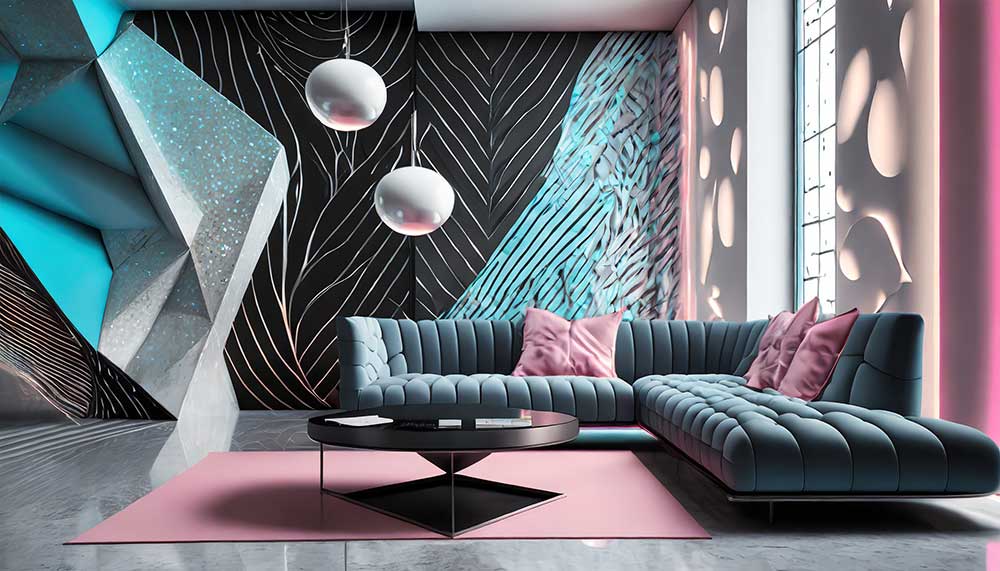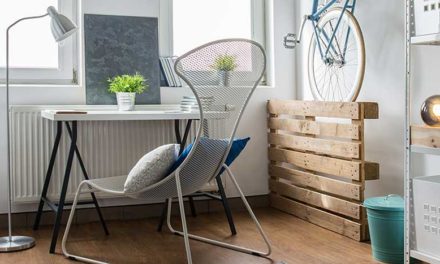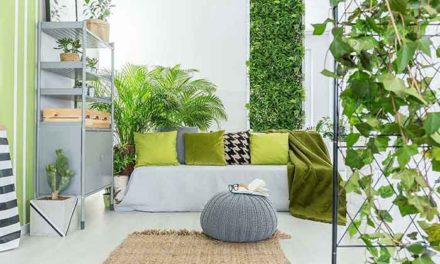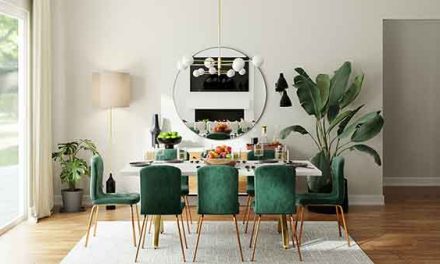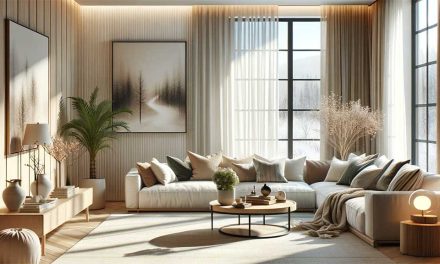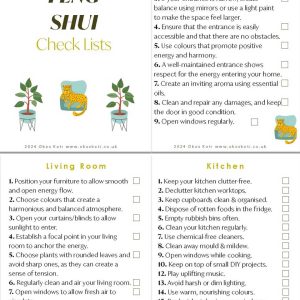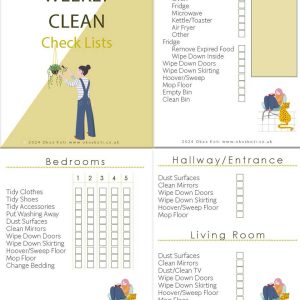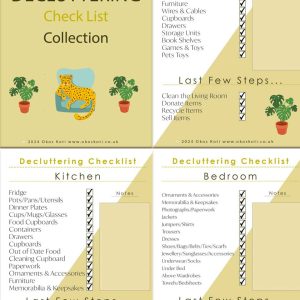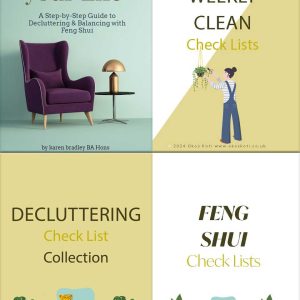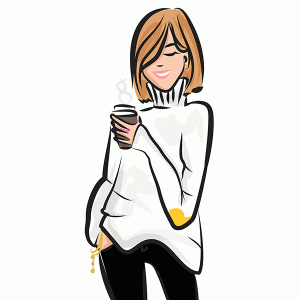Creating Cohesive Spaces: The Strategic Use of Color in Your Home
Colour in your home creates different moods and vibrations; depending on the atmosphere you want to create will determine the colour palette you should use.
Every colour used in your home has a unique energy that can affect you positively and negatively. For example, blues and greens are calming and grounding and best used to create a relaxed environment, such as in a bedroom. In comparison, a stimulating colour such as red, associated with danger, should be used sparingly in a bedroom because too much would not be conducive to a restful night’s sleep.
Light colours in your home will reflect more natural light, so works well in environments where you spend a lot of time, such as the kitchen, home office or family rooms. When using a dark colour in your home, ensure it is something you can live with. This fashionable style looks fantastic in interior photo shoots but can be oppressive in a room where you spend a lot of time.
Identity Colours
Identity colours are the colours that you are instinctively drawn to, and using your identity colour in your home can positively affect your mood and well-being. We all have a favourite colour that we tend to notice more in the clothing we buy but may not consider in the interior design of our homes. Surrounding yourself with your identity colour will help you to feel relaxed and at ease.
A strong personality may like more vibrant colours, while a more timid nature prefers a softer colour pallet. Sometimes when we live with one or more people, our identity colours can clash. In this instance, you will need to compromise by either using a lighter tone of your identity colour or using the colour as an accent in the room.
Mastering the Art of Combining Colour in Your Home
You can use colour as a pure hue, or by adding either white, black or grey, to create tone, tints and shades. The colour pallet choices are endless. Start with the colour you want to use, and then determine if this colour works in the room or whether it would benefit from being a lighter or darker shade.
From this base colour, you can start to look at colour combinations. For example, a monochrome scheme will range between lighter and darker versions of the base colour or hue and creates a modern, harmonious interior. A complementary colour scheme uses opposite colours on the colour wheel to create contrast and give a more vibrant feel.
Primary, secondary and tertiary colours
- Primary Colours: Red, blue, and yellow. Primary colours cannot be made by mixing other colours.
- Secondary Colours: Orange, purple can and green. Can be made by mixing primary colours.
- Tertiary Colours: These are made by mixing equal amounts of primary and secondary colours.
Exploring Distinctive and Impactful Color Combinations
Analogous Harmony
Select a colour from the wheel, then employ the hues on either side to craft an analogous scheme. For added depth, incorporate more than one colour on each side. Implementing this technique within your living space establishes a seamless and harmonious ambience.
Monochromatic Elegance
Achieve a monochrome scheme by navigating between lighter and darker base colour variations or hue variations. Utilising a monochromatic palette in your home fosters a sense of cohesion and harmony throughout the space.
Triad Brilliance
Construct a triad colour scheme by harmonising three evenly spaced colours around the colour wheel. Adjust the vibrancy with tints, shades, or tones, infusing a captivating dynamic into your design. The triad colour scheme introduces a combination of colours, elevating visual interest in your space.
Complementary Vibrance
Embrace the energy of a complementary colour scheme, uniting two colours positioned opposite each other on the colour wheel. While a full spectrum of colours can create vibrancy, balancing the impact is essential. Introduce tints or tones by incorporating white or grey into the colour mix to achieve a more subtle effect.
Split Complementary Sophistication
Craft a split complementary colour scheme by selecting your focal colour, identifying the complementary colour, and then opting for the hues on either side. This approach combines contrast with sophistication, creating a visually appealing composition.
Visualising the Palette
Explore the possibilities with the Adobe Color Wheel to visualise and refine your chosen colour combinations.
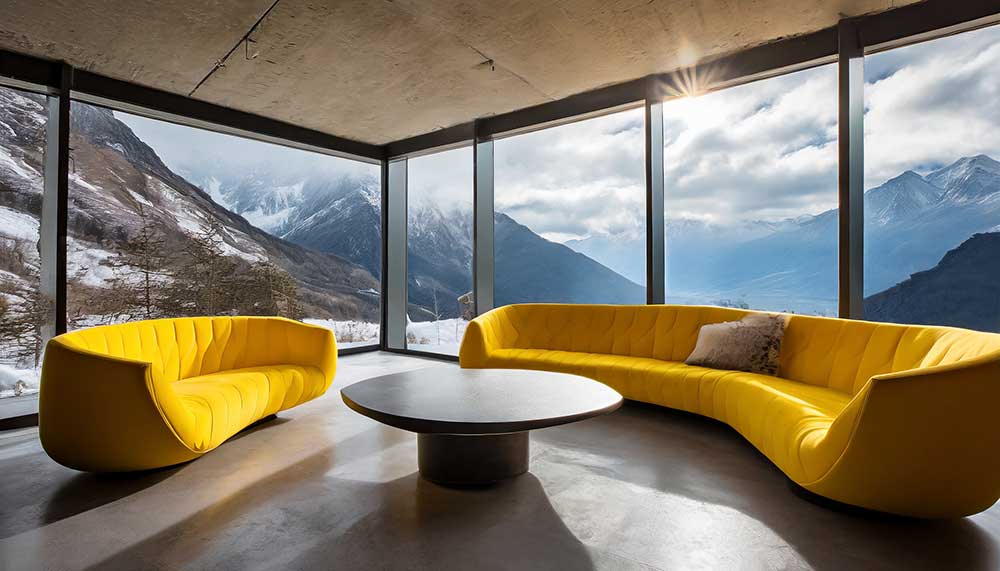
Unlocking the Power of Color in Your Home with Crystal Energies and Aromatherapy
Yellow
-
Key Words:
Communication, cheerful, fun, creative, impatient.
-
Effects:
Helps us focus, study & recall information; helps with communication.
-
Where:
Study, kitchen, office.
Yellow is a cheerful, uplifting, illuminating colour associated with the sun. We feel happier in the sunshine, which inspires enthusiasm for life. The colour of fresh new ideas and mental challenges helps us to make decisions. Because yellow is a fast-moving colour, it can cause us to feel anxious. Yellow is the entertainer, a practical, non-emotional colour that comes from the head rather than the heart. This fast-moving colour can become unsettling if overused.
-
Associated Crystals: (Yellow)
Awakening & organising, yellow crystals activate the mental level and the solar plexus. Calm emotions and infections. (Citrine)
-
Associated Aroma:
Basil, Lemongrass, Cardamom, Grapefruit, Camphor, Patchouli, Peppermint, Peppermint & Rosemary (mental & memory stimulant.
Orange
-
Key Words:
Creative, stimulating, uplifting, optimistic, cheerful.
-
Effects:
Feelings of optimism create a joyful atmosphere.
-
Where:
Dining room, living room, snug, games room.
A warm, happy-go-lucky colour that combines the passion of red and the joyfulness of yellow. The colour orange is uplifting and optimistic, which helps us look on the bright side of life. Orange is physically and mentally stimulating to our senses, making it an excellent colour to use in social situations to help promote conversation. Like red, orange stimulates our appetite and would be a perfect colour to introduce at a dinner party. Add a splash of orange in your living room on throws, scatter cushions, lampshades or a rug, adding a zest of cheerfulness to your space.
-
Associated Crystals: (Orange)
Activating and releasing, these crystals help build energetic structures. Orange-coloured crystals attract abundance and help with creative projects. (Carnelian)
-
Associated Aroma:
Sandalwood, Lemon, Rosemary, Rosewood, Sweet orange grapefruit or lemon (refreshing and uplifting), Ginger, Rosemary, Peppermint, Cinnamon, and Clary Sage (energising & stimulating).
Red
-
Keywords:
Passionate, stimulating, fiery, aggressive, loving.
-
Effects:
Boosts your energy, uplifts your spirit, stimulates passion & appetite.
-
Where:
Bedroom, dining room, restaurant.
Red possesses a stimulating quality, capable of energising our vitality levels. Its influence extends to elevating heart rate and blood pressure; however, excessive exposure to red may induce feelings of anger and agitation. Widely employed in the restaurant industry, red is strategically utilised to stimulate appetite and enhance food cravings. While red can evoke feelings of sexual desire and passion, caution is advised against its overuse, as an excess of this colour in your home may contribute to the creation of an argumentative atmosphere. Striking a careful balance in incorporating red ensures its positive impact without overwhelming the environment.
-
Associated Crystals: (Red)
Stimulating and strengthening, these crystals work well for activating creativity but may over-excite emotions. (Faceted Ruby)
-
Associated Aroma:
Ginger, Rosemary, Peppermint, Cinnamon, Clary Sage. (energising & stimulating)
Pink
-
Key Words:
Feminine, love, compassion, romance, understanding, nurturing.
-
Effects:
Creates a loving environment, enhances romance and feelings of love & compassion.
-
Where:
Bedroom, kid’s room, spa, bathroom.
Pink is a colour of unconditional love; it creates a nurturing and comfortable environment. A combination of red and white; it holds the passion and fire of red whilst harmonising with the purity and innocence of white. It calms our emotions, helping us release negative feelings while healing our hearts of pain and suffering. Pink can effectively have a calming effect on our nervous system.
-
Associated Crystals: (Pink)
Offer unconditional love, nurturing and comfort; pink crystals are perfect for healing your heart, releasing grief, calming emotions and instilling acceptance. (Rose Quartz)
-
Associated Aroma:
Ylang Ylang, Jasmine, Geranium, Sandalwood (Romantic) Sandalwood, Chamomile, Geranium, Rose Otto, Ylang Ylang, Orange. (relaxing & aids sleep)
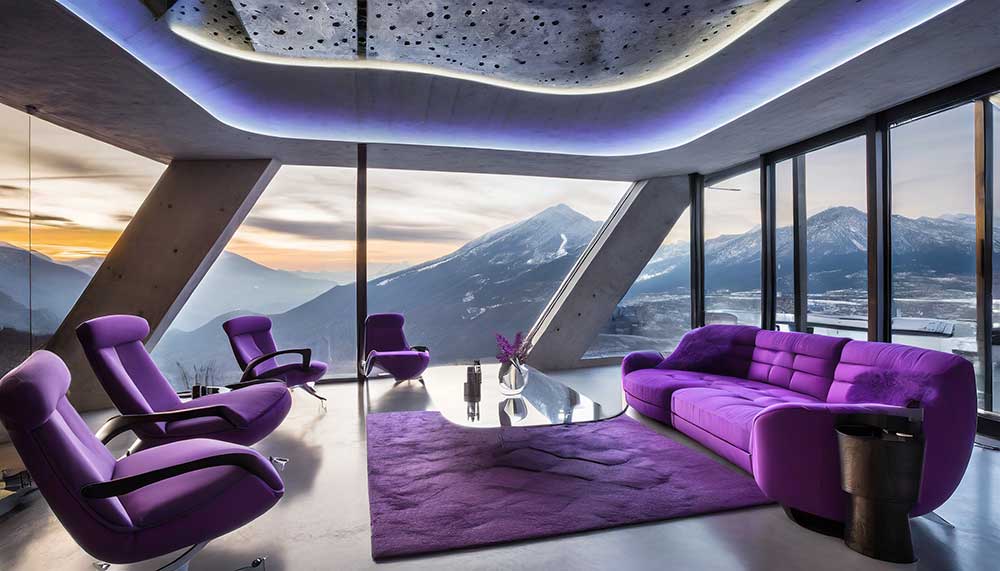
Violet
-
Key Words:
Spiritual enlightenment, creativity, psychic, individual, love of humanity, compassion.
-
Effects:
Creates a balanced mind, good for spiritual practices.
-
Where:
Spa, bedroom, church, meditation room.
Violet and purple have similar meanings. A colour of true spiritual meaning, stimulating the imagination and allowing us to enhance our psychic abilities and spiritual enlightenment. These colours are often used within mediation rooms as they are introspective colours that allow us to access our deepest inner thoughts. Creativity, expression, and harmony help create mental balance and stability. It is also seen as a colour of wealth and luxury and is associated with royalty. Purple/violet is a colour that needs to be used with caution as it can create a depressive state in some people.
-
Associated Crystals: (Violet, purple, lilac)
Integrating and aligning, these crystals have powerful spiritual-awakening qualities, stimulating service to others. (Fluorite)
-
Associated Aroma:
Tea Tree, Lavender, Thyme. Juniper, Eucalyptus, Rosemary, Pine. (clearing & purifying)
Magenta
-
Key Words:
Harmony, balance, spiritual, compassionate, loving, creative, artistic, harmony.
-
Effects:
Spiritual enlightenment and alleviates stress.
-
Where:
Study, mediation room, sitting room, music room.
Magenta is a combination of passionate red and spiritual violet, creating a transformative colour. Aids with spiritual development, strengthening our intuition and psychic abilities whilst balancing our well-being.
A happy, optimistic colour that can help to lift our spirits in times of stress and inspire personal development.
As with purple/violet, the overuse of this colour in your home could make you feel depressed, anxious, and irritated; it is important to combine it with a colour that will have a balancing effect, such as green.
-
Associated Crystals: (Red)
Stimulating and strengthening, these crystals work well for activating creativity but may over-excite emotions. (Faceted Ruby)
-
(Purple, Lilac)
Integrating and aligning, these crystals have powerful spiritual-awakening qualities, stimulating service to others. (Fluorite)
-
Associated Aroma:
Neroli, Geranium, Rose, Cypress, Lemon. (balancing & restoring)
Blue
-
Key Words:
Peaceful, calm, caring, restful, loyal, reliable
-
Effects:
Reduces stress, creates relaxing & calming space
-
Where:
Bedroom, office, bathroom, study, therapy room, reception.
Blue is the colour of peace and tranquillity; it slows our metabolism down, helping us to feel calm and at ease. Like green, blue is associated with nature; when we feel off balance, we may be drawn to sit by the sea to feel at one with nature. Incorporate blue colour in your home or workplace to aid communication and self-expression and create a calm and relaxed environment that will help reduce stress.
The colour of honesty and trust is often used for branding within the corporate world by companies that want to portray a trustworthy image. Concentration and productivity can be improved whilst also offering a balanced, tranquil vibe, so would be a good colour to use in an office or study.
-
Associated Crystals: (Blue)
Blue crystals are calming and help facilitate communication and self-expression. These crystals can ground or project spiritual energy. They can help with channelling intuition. (Angelite)
-
Associated Aroma:
Basil, Lemongrass, Cardamom, Grapefruit, Camphor, Patchouli, Peppermint, Rosemary (Mental and memory Stimulant), Sandalwood, Chamomile, Geranium, Rose Otto, Ylang Ylang, Orange. (relaxing)
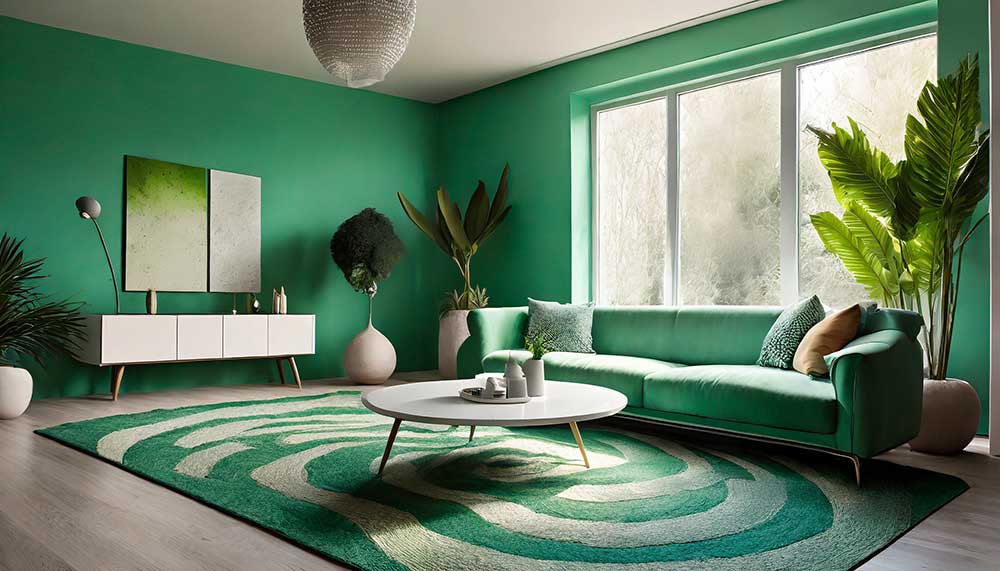
Green
-
Key Words:
Nurturing, balancing, growth, renewal, calming, relaxing.
-
Effects:
Creates a sense of calm and helps us feel the balancing effects of nature.
-
Where:
Bedroom, bathroom, meditation space, spa, therapy room, living room, snug.
Green, entwined with nature, symbolises growth, renewal, and rebirth, inducing a sense of calm and relaxation. The amalgamation of blue and yellow within the spectrum of green combines the positive attributes of both colours; yellows convey an optimistic, sunny outlook, while blue embodies tranquillity, resulting in a hue that inspires hope and balance.
Recognised for its healing and balancing qualities, the colour green contributes to easing the mind, body, and soul, relieving anxious thoughts. However, an excess of green colour in your home may induce feelings of lethargy. To counterbalance, incorporate accents of uplifting colours such as orange, introducing vibrancy and maintaining a harmonious equilibrium in your living space.
-
Associated Crystals: (Green)
Green crystals are best used to calm emotions and help us feel balanced. (Malachite)
-
Associated Aroma:
Neroli, Geranium, Rose, Cypress, Lemon (balancing & restoring) Sandalwood, Chamomile, Geranium, Rose Otto, Ylang Ylang, Orange. (relaxing & sleep)
Brown
-
Key Words:
Stable, supportive, comforting, sensitive, honest, down to earth.
-
Effects:
Creates a calm environment and feelings of security.
-
Where:
Lounge, snug, bedroom.
Brown is linked with attributes of strength, stability, and security. It embodies a sense of physical comfort, emphasising quality, material security, and the accumulation of possessions. Symbolising comfort in various aspects—be it a cosy home, well-furnished surroundings, or a sense of belonging with friends and family—brown encourages a genuine feeling of connection.
As a natural and earthy colour, brown harmonises effectively with most other hues. However, an excess of brown may induce feelings of lethargy. To counterbalance, consider introducing uplifting colours like yellow or orange colour in your home to infuse a vibrant and invigorating element.
- Associated Crystals: (Brown) Protects and grounds the physical body and detoxifies negative energies. (Tigers Eye)
-
Associated Aroma:
Chamomile, Ylang Ylang, Clary Sage, Tangerine, Lavender, Combine lavender with vanilla. (warm & secure)
Grey
-
Key Words:
Classic, stable, calming, elegant, formal, dependable.
-
Effects:
Create a timeless look.
-
Where:
Kitchen, bathroom, office.
Grey exists as a non-colour between white and black spectrums. A shade of grey tending towards black imparts a dramatic aesthetic, while a version leaning towards white exudes a livelier and more dynamic feel. Emotionally detached and unstimulating, grey lacks the invigorating qualities of colours like orange or yellow. Despite its neutral disposition, the interplay creates an intriguing colour in your home when paired with vibrant hues such as magenta or orange.
Regrettably, our towns and cities are saturated with homes adorned in shades of grey, contributing to an increasingly bleak and disheartening urban landscape. This pervasive greyness in our streets amplifies feelings of loneliness and isolation among people.
-
Associated Aroma:
Basil, Lemongrass, Cardamom, Camphor, Patchouli, Peppermint, Peppermint & Rosemary. (mental & memory stimulants)
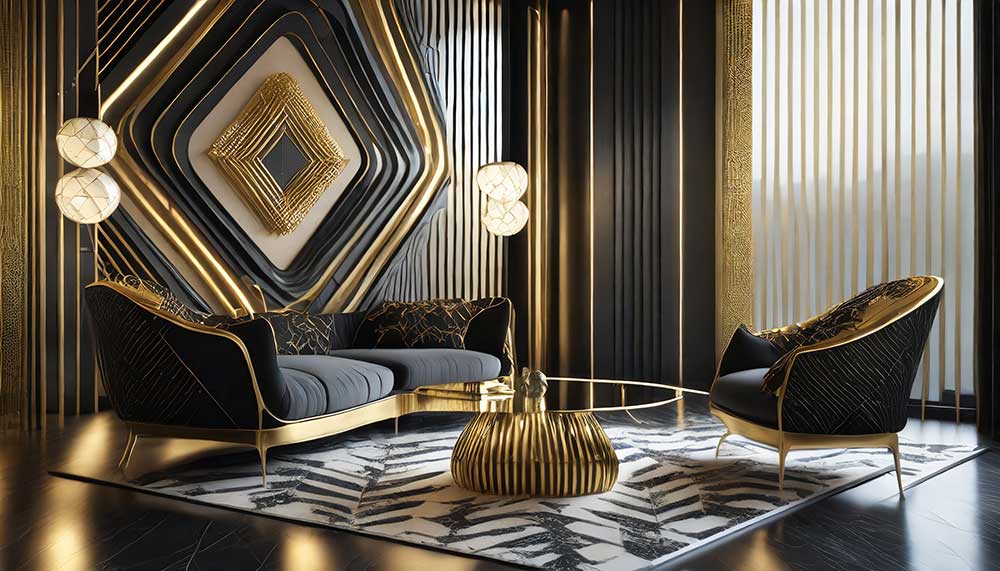
Silver
-
Key Words:
Balancing, calming, glamourous, modern, sleek, feminine, powerful.
-
Effects:
Illuminating, supportive, sophisticated.
-
Where:
Kitchen, lounge, snug, office, bar, restaurant. Intertwined with lunar associations, silver emanates feminine energy, symbolising sophistication and a connection to the contemporary world. Possessing a calming and purifying essence, silver aids in the cleansing and release of physical, mental, or emotional issues.
Its compatibility with other colours is notable, as silver can illuminate and reflect the energies of its surroundings. This quality enhances the inherent attributes of adjacent colours, creating a harmonious synergy within the visual spectrum.
-
Associated Crystals: (White/Clear)
Purifying and focusing energy, these crystals link to the highest realms of being. Excellent for when situations need clarifying or for opening intuition and gaining insight. (Snow Quartz)
-
Associated Aroma:
Tea Tree, Lavender, Thyme, Juniper, Eucalyptus, Rosemary, Pine. (clearing & purifying)
Gold
-
Key Words:
Success, passion, optimism, abundance, wealth, positivity, self-worth, masculinity, wisdom.
-
Effects:
Grandeur and luxury.
-
Where:
Lounge, bathroom, home office, entrance hall, restaurant, boutique, hotel. Gold is related to the sun and has masculine energy. The colour of success, wealth and power is associated with luxury and abundance.
Gold, a warm and versatile hue, presents itself in various forms and finishes, ranging from glossy with a touch of glamour to more subdued and muted. Regardless of its manifestation, the colour in your home effortlessly infuses a room with an aura of luxury and sophistication. Beyond its aesthetic appeal, gold is intertwined with spirituality, higher learning, and self-understanding, encapsulating a generous and compassionate essence.
-
Associated Crystals: (Orange)
Activating and releasing. Many orange crystals attract abundance and help with creative projects. (Carnelian)
-
(Yellow)
Awakening and organising, yellow crystals activate the mental level and the solar plexus, calming emotions. (Citrine)
-
Associated Aroma:
Ginger, Rosemary, Peppermint, Cinnamon, Clary Sage. (energising & stimulating)
White
-
Key Words:
Purity, new beginnings, simplicity, innocence, cleanliness, stark.
-
Effects:
Purity and cleansing.
-
Where:
All interiors
White symbolises fresh starts, epitomising the purest shade in the spectrum. Acting as a cleanser for thoughts and emotions, white aids in the release and renewal of your energetic body.
Encapsulating the positive and negative aspects of every hue, comprising an equilibrium of all spectrum colours. While it may offer minimal sensory stimulation, white presents a blank canvas, allowing limitless freedom in any interior. Infuse a hint of magenta or red for a lively ambience, or opt for a splash of turquoise to foster creativity within the space.
-
Associated Crystal: (White/Clear)
Purifying and focusing energy. Excellent crystals for situations needing clarification or for opening intuition and gaining insight. (Snow Quartz)
-
Associated Aroma:
Tea Tree, Lavender, Thyme. Juniper, Eucalyptus, Rosemary, Pine. (clearing & purifying)
Black
-
Key Words:
It is sophisticated, seductive, protective, formal, strong, comforting.
-
Effects:
Sophistication.
-
Where:
Bar, restaurant, kitchen.
When worn, black is sophisticated and looks elegant and stylish. Within Western culture, black has strong associations with mourning at a funeral or linked to death and the afterlife.
Black is a colour that needs to be used with caution because too much can create a negative environment and is linked to depression and mood swings. When using this colour in the home, use it sparingly and alongside other colours that will uplift and balance.
-
Associated Crystals: (Black/Dark)
Proper protectors for grounding the physical body and detoxifying negative energies. (Tigers Eye)
-
Associated Aroma:
Basil, Lemongrass, Cardamom, Grapefruit, Camphor, Patchouli, Peppermint, Peppermint & Rosemary. (mental & memory stimulants)
Harmonising Your Home with Color
In the artful endeavour of creating cohesive spaces, the strategic use of colour in the home emerges as a powerful tool, influencing the aesthetics and essence of our homes. Understanding the diverse moods and energies that colours evoke allows us to orchestrate environments that resonate with our desires and aspirations.
The palette we choose for our homes is a language of emotions, a symphony of vibrations that can elevate, calm, stimulate, or soothe. From the calming embrace of blues and greens in tranquil bedrooms to the energising aura of light colours in lively spaces, each hue becomes a brushstroke in the canvas of our daily lives.
As we navigate the subtle dance between light and dark tones, we learn that the fashionable allure of darker colours may shine in brief photo shoots but requires thoughtful consideration in spaces where we spend time. The home, after all, is a sanctuary where comfort and style intertwine, and the strategic use of colour becomes our guide in achieving this delicate balance.
Identity in Color: Infusing Personal Meaning into Living Spaces
The notion of identity colours invites us to infuse personal meaning into our living spaces. Our favourite hues, often found in our wardrobe choices, can now take centre stage in our homes, influencing our mood and overall well-being. Whether vibrant and bold or soft and subtle, these identity colours speak a silent language that resonates with our essence.
Yet, in shared spaces, the clash of identity colours may necessitate compromise, a delicate dance of finding common ground. Lighter tones and strategic accents become the tools of harmony, ensuring that every inhabitant feels a sense of ease and belonging in their shared surroundings.
In the tapestry of home design, colour is the thread that weaves through every moment, creating a narrative of comfort, style, and personal expression. By strategically incorporating colour, we craft cohesive spaces and curate environments that harmonise with the unique rhythms of our lives.

